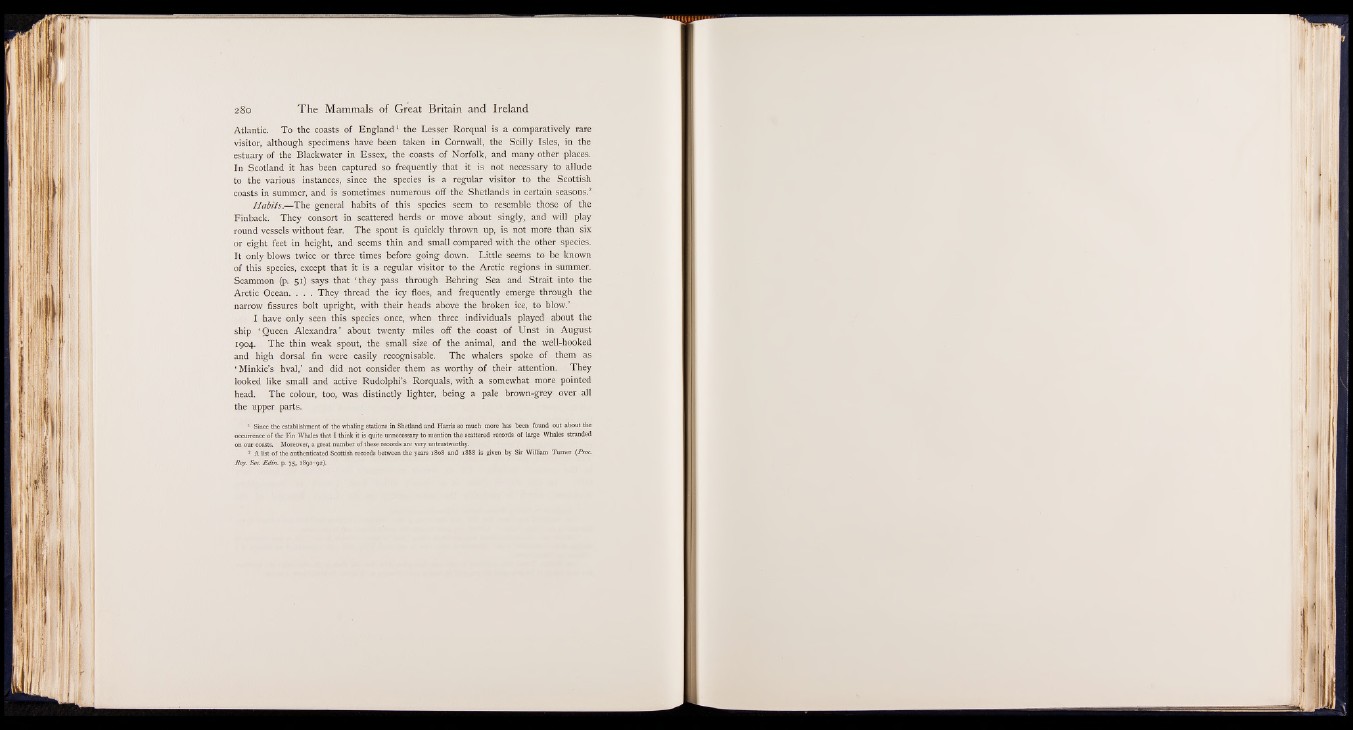
2 8 o The Mammals of Great Britain and Ireland
Atlantic. To the coasts of England1 the Lesser Rorqual is a comparatively rare
visitor, although specimens have been taken in Cornwall, the Scilly Isles, in the
estuary of the Blackwater in Essex, the coasts of Norfolk, and many other places.
In Scotland it has been captured so frequently that it is not necessary to allude
to the various instances, since the species is a regular visitor to the Scottish
coasts in summer, and is sometimes numerous off the Shetlands in certain seasons.2
Habits.— The general habits of this species seem to resemble those of the
Finback. They consort in scattered herds or move about singly, and will play
round vessels without fear. The spout is quickly thrown up, is not more than six
or eight feet in height, and seems thin and small compared with the other species.
It only blows twice or three times before going down. Little seems to be known
of this species, except that it is a regular visitor to the Arctic regions in summer.
Scammon (p. 51) says that ‘ they pass through Behring Sea and Strait into the
Arctic Ocean. . . . They thread the icy floes, and frequently emerge through the
narrow fissures bolt upright, with their heads above the broken ice, to blow.’
I have only seen this species once, when three individuals played about the
ship ‘ Queen Alexandra’ about twenty miles off the coast of Unst in August
1904. The thin weak spout, the small size of the animal, and the well-hooked
and high dorsal fin were easily recognisable. The whalers spoke of them as
‘ Minkie’s hval,’ and did not consider them as worthy of their attention. They
looked like small and active Rudolphi’s Rorquals, with a somewhat more pointed
head. The colour, too, was distinctly lighter, being a pale brown-grey over all
the upper parts.
1 Since the establishment of the whaling stations in Shetland and Harris so much more has been found out about the
occurrence of the Fin Whales that I think it is quite unnecessary to mention the scattered records of large Whales stranded
on our coasts. Moreover, a great number of these records are very untrustworthy.
2 A list of the authenticated Scottish records between the years 1808 and 1888 is given by Sir William Turner (Proc.
Roy. Soc. Edin. p. 75, 1891-92).